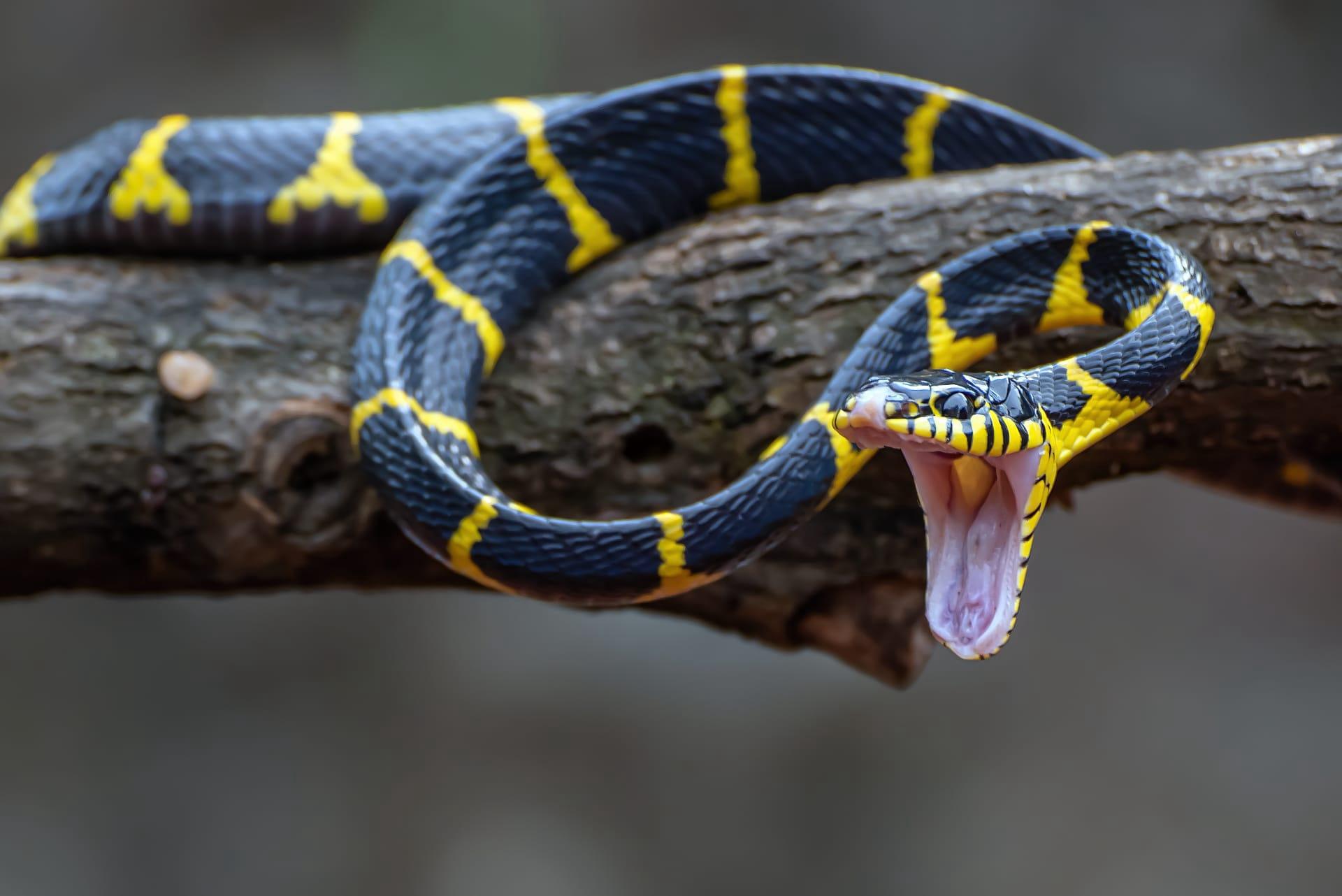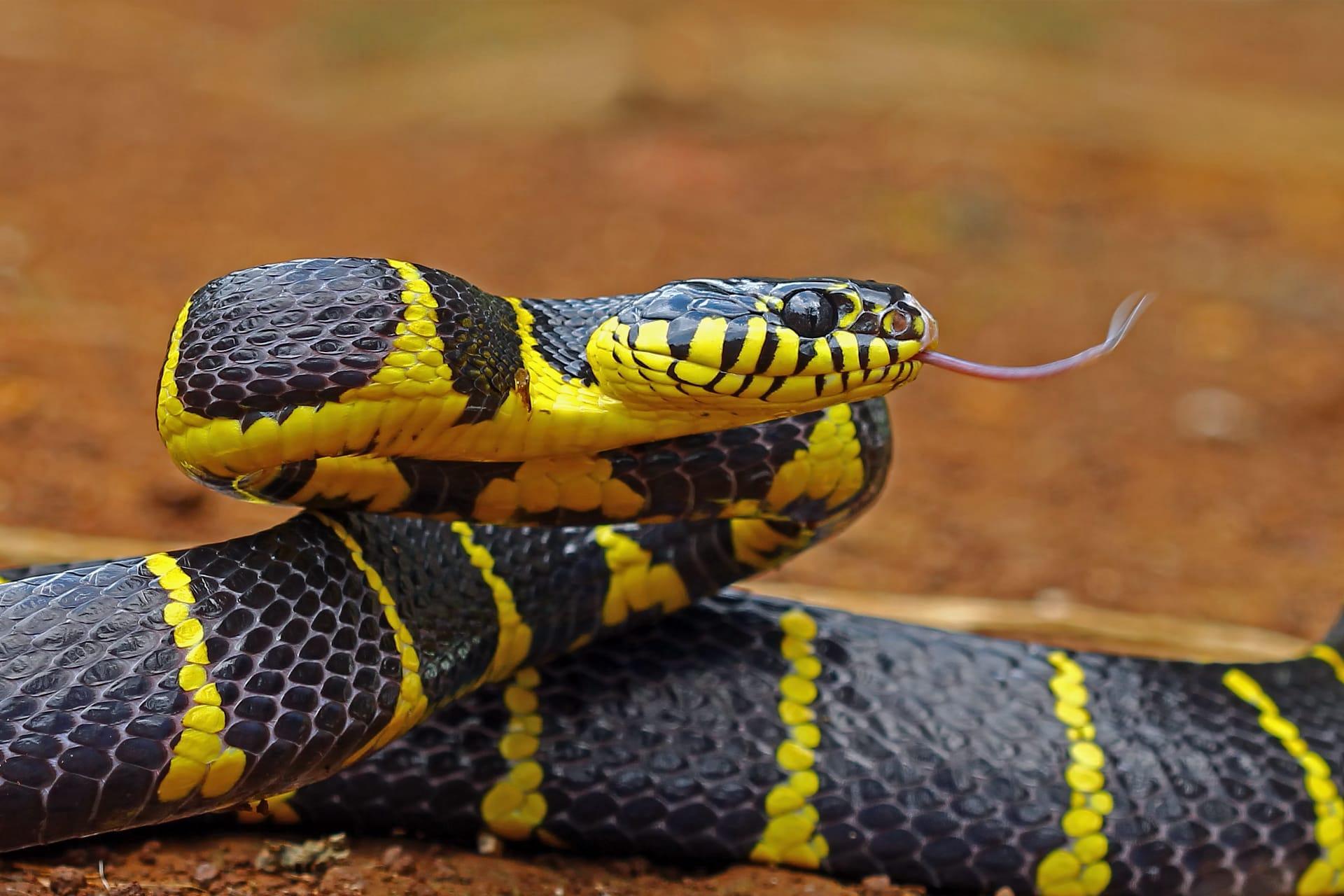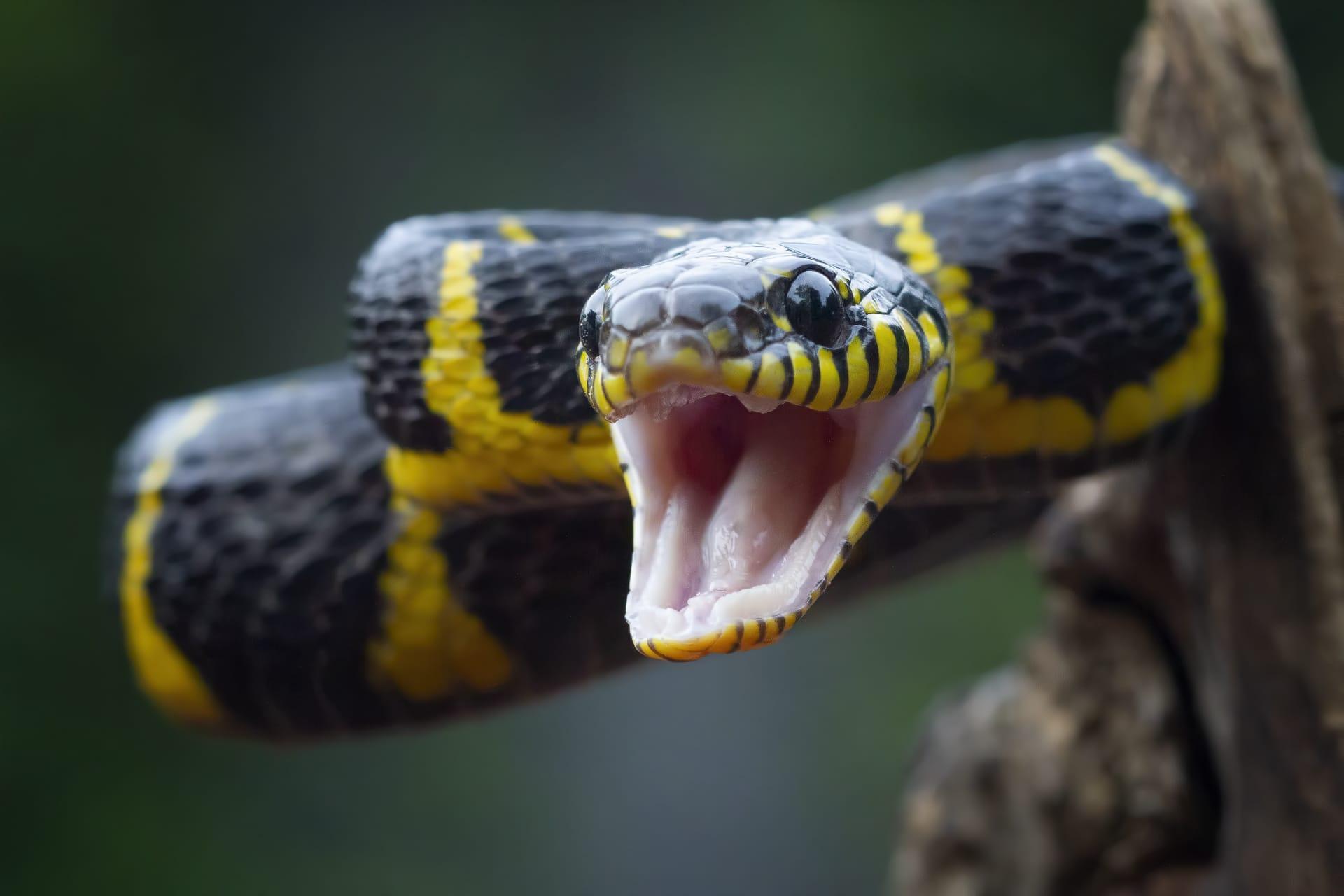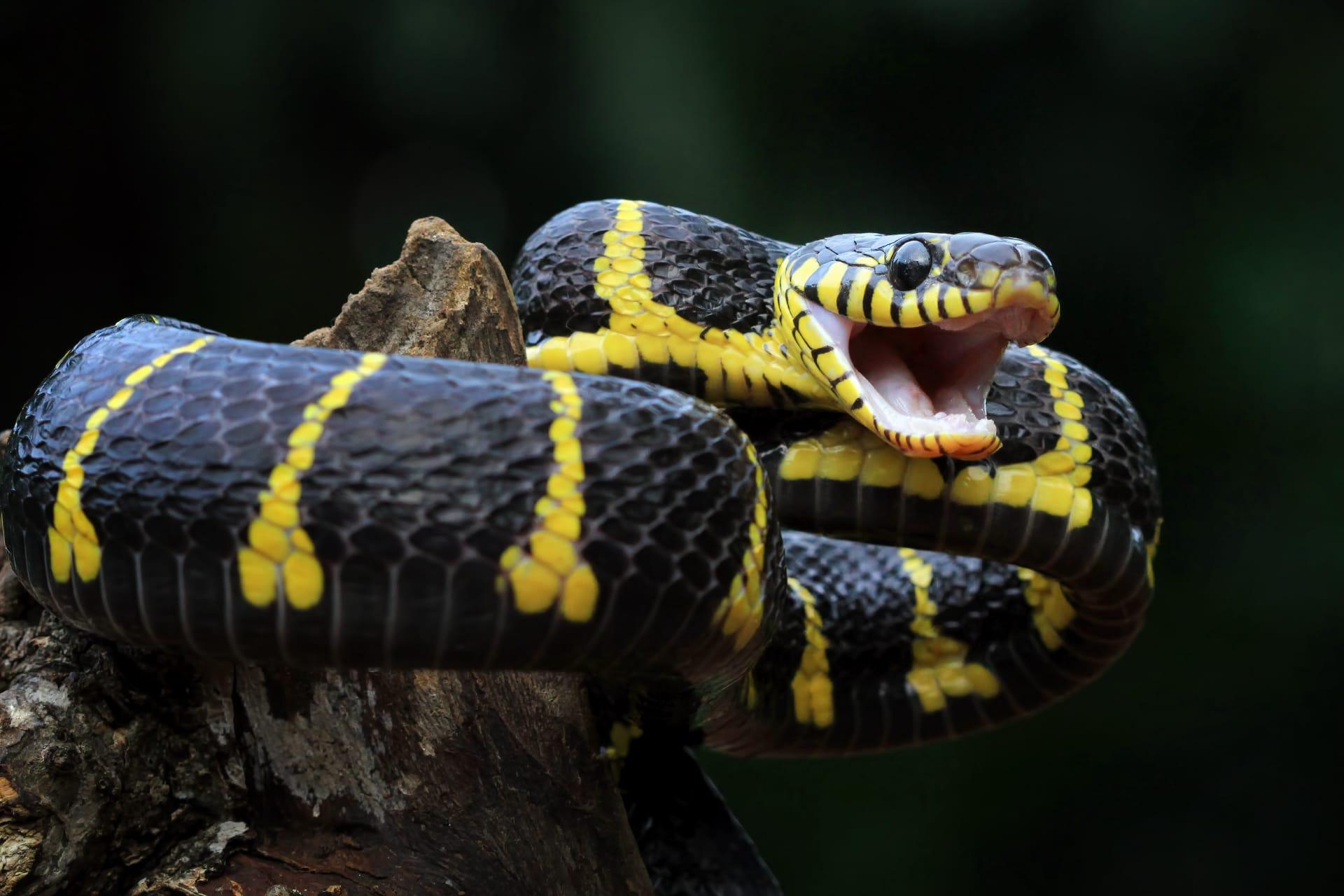1
Banded Kraits, scientifically known as Bungarus fasciatus, are easily recognizable by their distinct black and yellow crossbands. These vibrant bands are not just for show; they serve as a warning to potential predators about the snake's potent venom. This coloration is a classic example of aposematism, where bright patterns signal danger in the animal kingdom. The Banded Krait can grow up to 2 meters in length, making it one of the largest species in the genus Bungarus. Interestingly, despite their intimidating size and venomous nature, these snakes are known for their relatively placid demeanor, rarely showing aggression unless provoked.
Banded Kraits have a unique hunting strategy. They are nocturnal predators, primarily feeding on other snakes, including venomous ones. Their diet also includes small mammals, lizards, and frogs. What's fascinating is their hunting technique; they use a "bite and release" method. After delivering a venomous bite, the Banded Krait will release its prey, then follow the scent trail to find the envenomed and immobilized victim. This method reduces the risk of injury to the krait from struggling prey. Their venom, a neurotoxin, is incredibly potent, capable of paralyzing and even killing their prey quickly.

2
One of the lesser-known facts about the Banded Krait is its role in medical research. The venom of this snake has been a subject of interest for scientists studying pain receptors. Components of Banded Krait venom have shown potential in mapping the human nervous system's response to pain, providing insights that could lead to new pain management therapies. The venom contains alpha-bungarotoxin, a neurotoxin that has been crucial in understanding how nerves and muscles communicate. Research on this toxin has contributed to the development of drugs for diseases like Alzheimer's and Myasthenia Gravis.
The mating behavior of Banded Kraits is quite unique and ritualistic. During the mating season, males engage in a behavior known as 'wrestling'. This is not a fight but rather a slow, graceful dance where two males intertwine their bodies, trying to push each other's head to the ground. The winner gets the opportunity to mate with a nearby female. This non-violent form of competition is a stark contrast to the aggressive mating battles seen in many other snake species. Females lay between 4 to 14 eggs, and interestingly, they show a rare form of parental care by coiling around the eggs until they hatch, which is not common among many snake species.

3
The sensory perception of Banded Kraits is quite intriguing. They have poor eyesight and rely heavily on their keen sense of smell and sensitivity to vibrations for hunting and navigation. This is particularly important for their nocturnal lifestyle. Their forked tongue plays a vital role in this sensory perception. When flicked out, it collects scent particles from the air, which are then analyzed by an organ called the Jacobson's organ located in the roof of their mouth. This sophisticated biological mechanism allows them to detect prey and predators, navigate their environment, and even find mates.
Banded Kraits display a fascinating survival strategy during colder months. They are known to hibernate in communal dens, a behavior not commonly seen in many other snake species. These communal dens can sometimes house up to 100 individual snakes, including different species. This behavior is thought to be an adaptation to conserve heat and energy during the cooler season. It's a remarkable display of tolerance and coexistence, considering the solitary nature of these snakes outside the hibernation period. This hibernation also plays a crucial role in their life cycle, impacting their mating patterns and hunting behavior.

4
The geographical distribution of Banded Kraits is quite broad, extending across several countries in Southeast Asia. They are found in diverse habitats ranging from forests and grasslands to agricultural lands and even human settlements. This adaptability to various environments is a testament to their evolutionary success. However, their presence in human-populated areas often leads to conflicts, primarily due to fear and misunderstanding of these snakes. Conservation efforts are focused on educating the public about the ecological role of Banded Kraits and promoting coexistence.
Banded Kraits have a unique way of defending themselves. When threatened, instead of attacking, they often resort to a passive defense mechanism. They curl up in a tight coil with their head tucked away and their tail raised. The tail, which has a blunt tip and resembles the head, is then waved around to confuse predators. This behavior, known as 'caudal luring', tricks the predator into attacking the less vulnerable part of the snake's body, allowing the Banded Krait a chance to escape. It's a clever survival tactic that minimizes the risk of injury.

5
The social structure of Banded Kraits is quite solitary. Outside the mating season and hibernation periods, they are mostly lone wanderers. This solitary nature extends to their hunting habits as well. Unlike some snake species that may hunt in groups, Banded Kraits prefer to hunt alone, relying on their stealth and potent venom to capture prey. This solitary behavior is also reflected in their territorial nature. While they don’t aggressively defend their territory like some animals, they have a home range that they regularly patrol and hunt within.
The Banded Krait's influence extends beyond ecology and into cultural aspects in its native regions. In some cultures, these snakes are surrounded by superstitions and myths. For instance, in certain Southeast Asian cultures, it's believed that seeing a Banded Krait brings good luck. On the other hand, in some areas, they are feared and associated with evil spirits. These cultural beliefs have a significant impact on how local communities interact with and perceive these creatures, influencing conservation efforts and the snakes' overall status in their natural habitat.